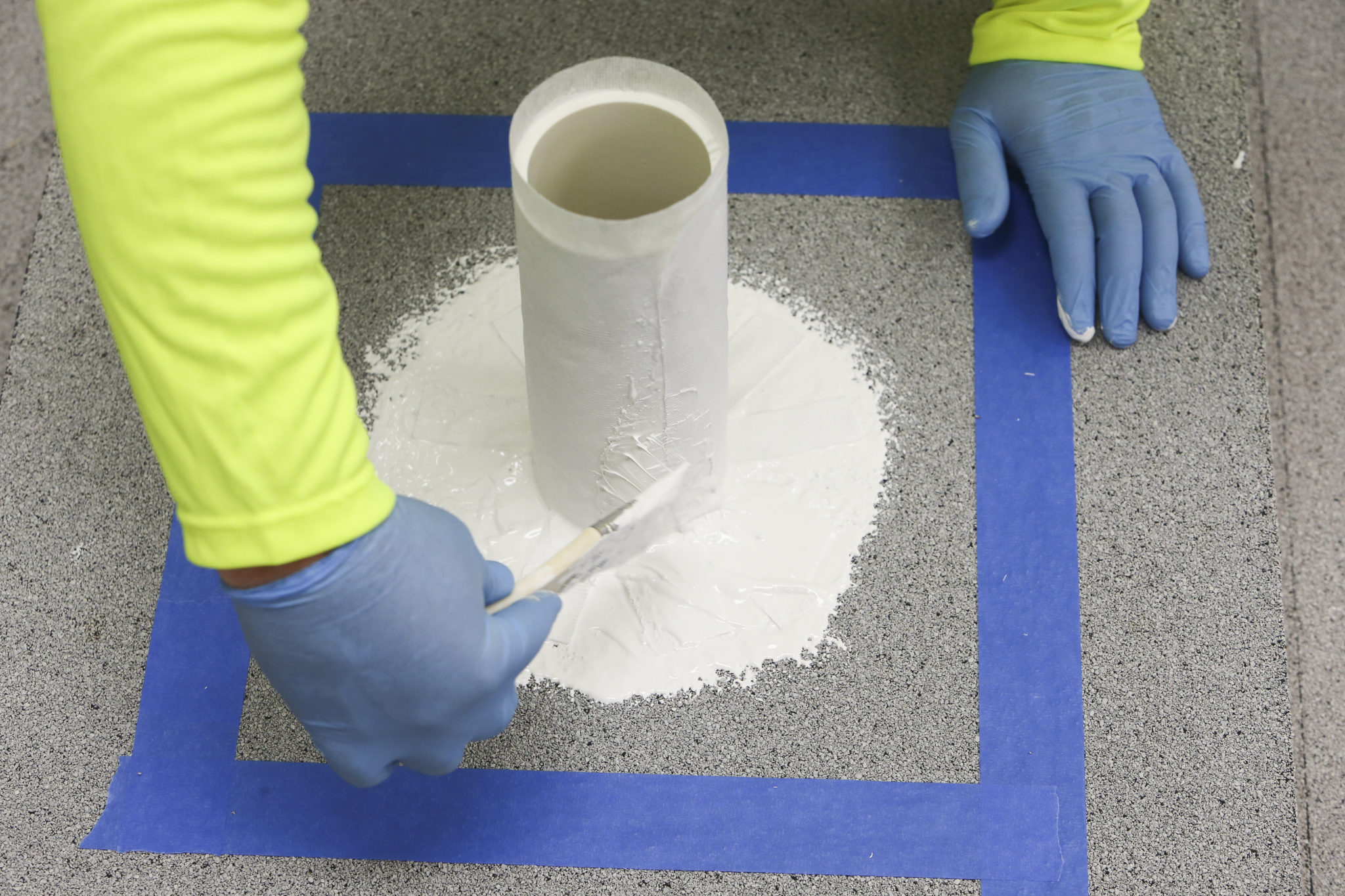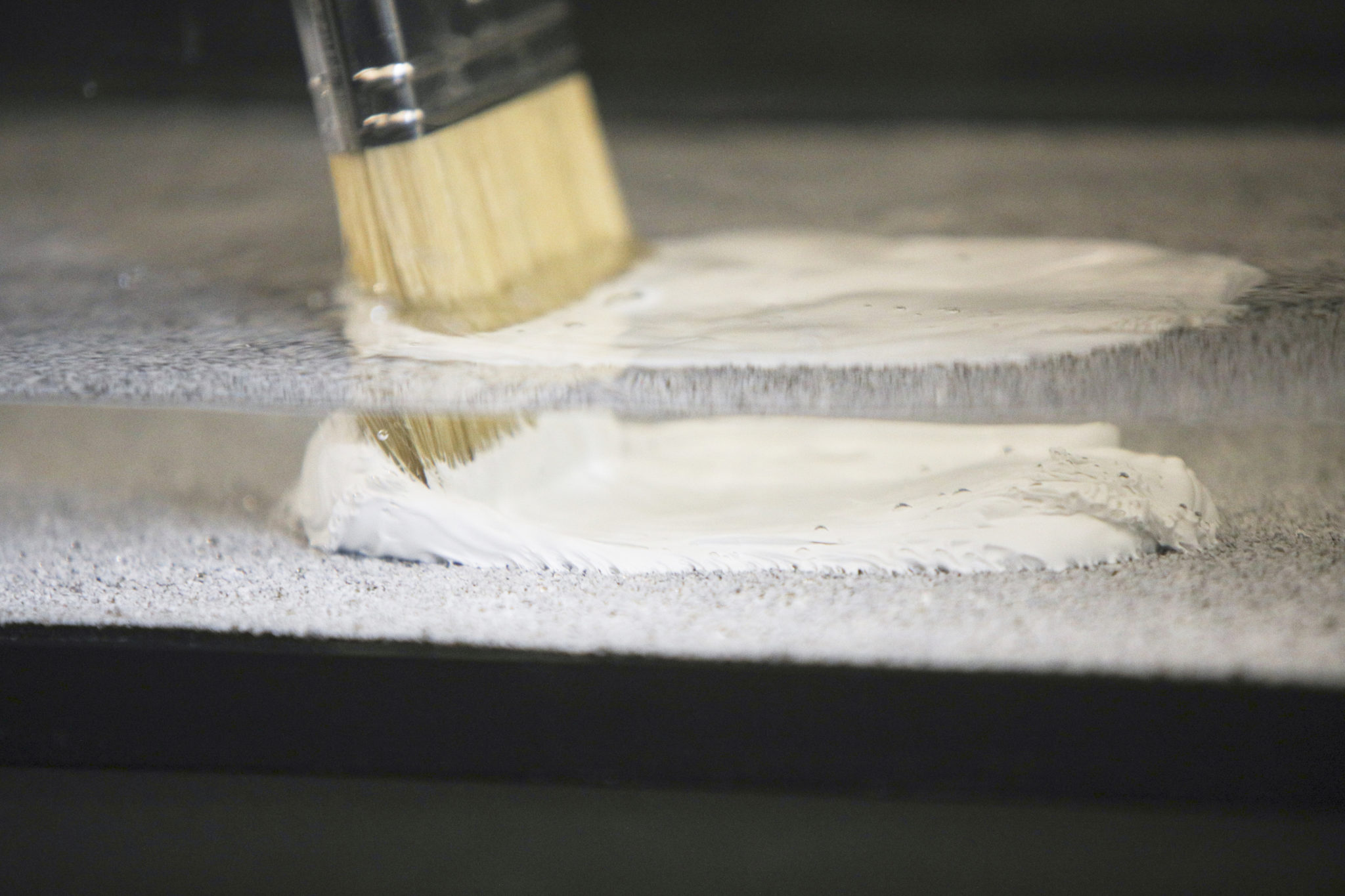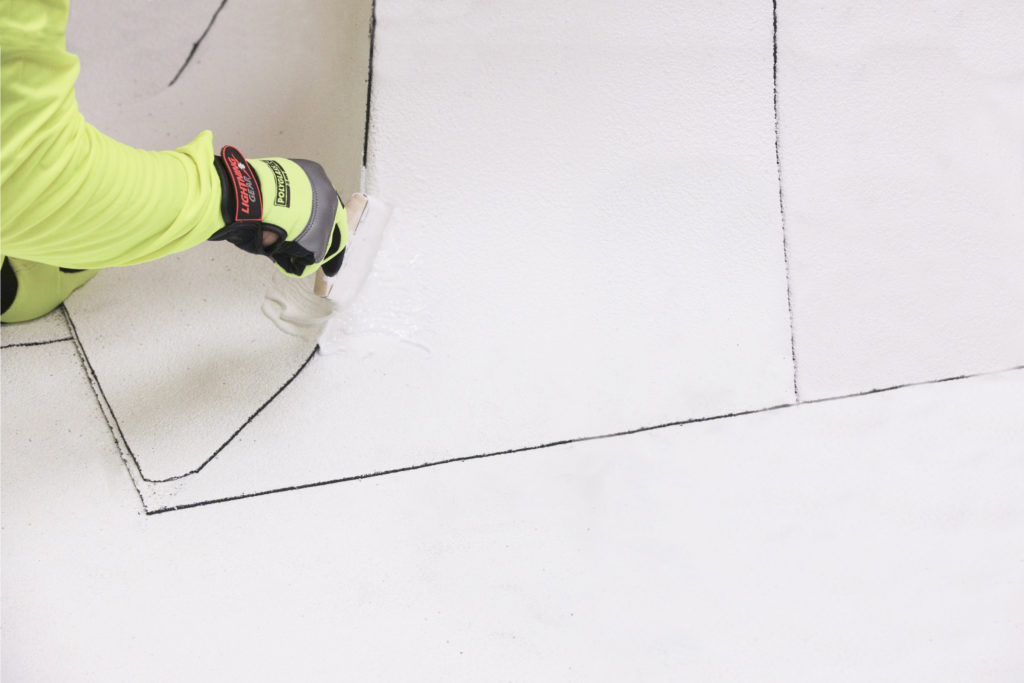
PolyFlash® 1C is a silane-modified polyurethane flashing compound designed for sealing and waterproofing roofing details, flashings, and penetrations on a wide variety of roofing systems. When combined with PolyBrite® reinforcing polyester fabric, this product can permanently solve typical and challenging flashing needs.
Download PolyFlash 1C Brochure
Polyflash 1C is compatible with multiple roof systems, including asphaltic membranes, APP and SBS membranes, and conventional BUR systems. It is ideal for sealing masonry, wood, curbs, vents, roof drains, pitch pans, specialty gypsum sheathing products, and unusually shaped penetrations.

Polyflash 1C also has the unique ability to be applied as an immediate, but temporary emergency leak repair over wet or damp surfaces:

As a reliable, versatile solution for temporary and permanent roof repairs, PolyFlash 1C is an ideal product for contractors to keep on hand when performing roof maintenance. When determining when to use this flashing compound, we recommend contractors walk through this handy roof maintenance checklist to ensure any warranties remain valid:
- Conduct a documented roof inspection. Visually survey the exterior condition of the roof.
- Remove roof-top debris. This includes (but is not limited to) leaves, branches, dirt, rocks, bottles, trash, etc., that has accumulated.
- Clean gutters, downspouts, drains, and scuppers. Make sure water freely flows off the roof. No standing water should remain on the roof surface within 48 hours after the last precipitation.
- Examine all metal flashing areas for rusting or damage. This kind of damage may have been caused by foot traffic, wind, hail, snow, ice, etc. All damaged, loose, or poorly sealed materials must be repaired with Polyglass products, by a Polyglass Preferred/Quantum Contractor, or as otherwise approved by Polyglass.
- Maintain and re-mediate all exposed mastics and sealants regardless of purpose or function. These maintenance items should include pitch pans and metal flashing sealants.

- Examine all adjacent areas to the roof, parapet walls, and adjoining structures. Damage to items such as masonry, failing mortar joints, loose or missing sealants, loose stone/tile caps, loose and improperly sealed counter-flashing, etc. often cause leaks. These items need to be repaired by properly trained personnel to avoid any unnecessary charges or voiding of warranty coverage. Unauthorized repairs will void the manufacturer’s warranty.
- Protect roof during repairs. When repairing items related to the roof/coating product(s), associated items, or building structure, be sure to use precaution and properly protect the roof/coating product(s) from damage.
- Examine roof-top equipment. This includes air conditioning units, condensers, exhaust fans, antennas, and any other roof-top items for damage. Check for leaking oil, damaged flashings, or loose parts/equipment that could cause puncture damage to the roof/coating product(s). All units shall be checked to ensure they are sound, watertight, and not be displaced by wind events.
- Check the building for excessive movement or settlement. Improper placement or the omission of expansion joints can cause unnecessary stress to the roof system, resulting in splits and drastically reducing the life cycle of the system.
Remember: In order to keep a valid warranty, all work related to the roof system, where the materials need to be repaired (i.e. new curbs, units, exhaust fans, antenna installation, repairs, etc) must be handled by a current Polyglass Preferred/Quantum Contractor. Failure of the Building Owner to utilize a Polyglass Preferred/Quantum Contractor, as well as the use of non-Polyglass approved/supplied materials, will result in immediate termination of the warranty without further notification.